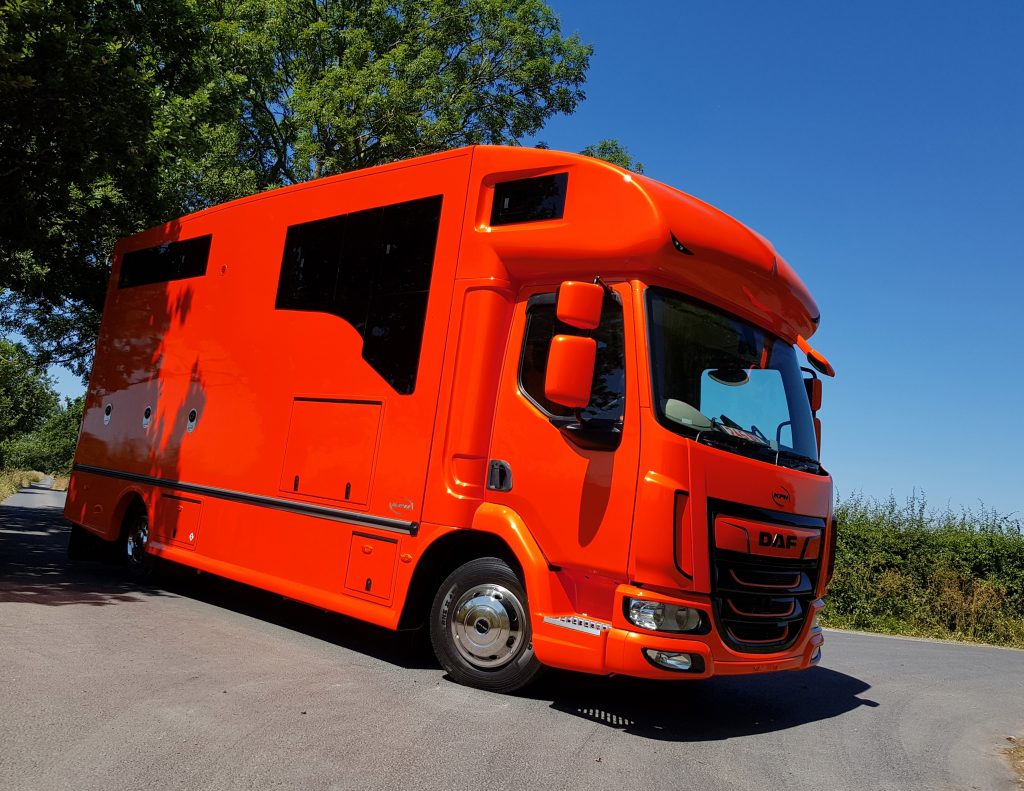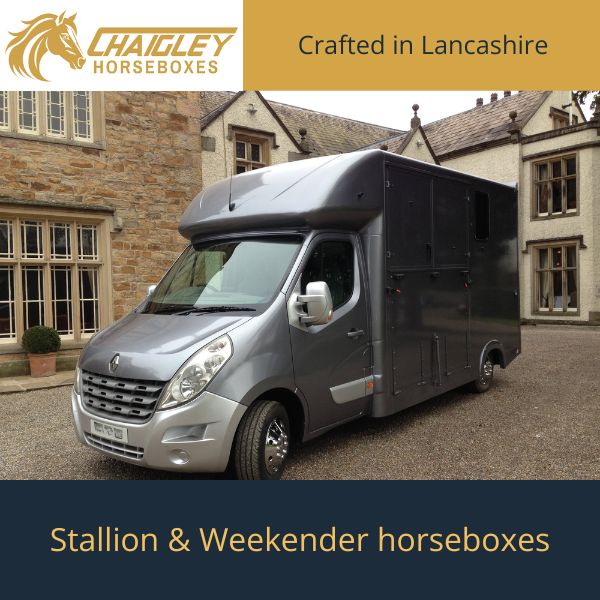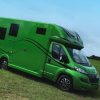
Buying a new or used horsebox has become a relatively simple endeavour. Unfortunately, choosing the wrong one is just as simple
Buying the nearest fit can have implications that will stretch you to breaking point many times in the following year. There are few things worse than living with a compromise or outright poor build. I have highlighted below a few items worth considering and many that at first glance may not be too obvious.
Starting the hunt
Before you even look at the first horsebox, it is prudent to make a comprehensive list of your individual requirements. Getting something down on paper is always a good starting place. It is then a very good idea to split your list into priority ‘must have’ items and your more frivolous ‘that would be nice’ items. This helps prioritise the important bones of the horsebox. Having said all this, this approach only works as long as you can keep focus on the import facts and not become distracted by the first horsebox you see.
So, armed with said list and the best of intensions, it is time to start looking. Remembering at all times, the road to Hell has been paved with good intensions, or should that be, good intentions butter no parsnips! The fact is with ought straying from your overall goal, buying a new horsebox is a minefield and much worse than buying a new car. Outward appearance is the first thing customers see and can often influence a decision to buy. In reality, although outward shape and paintwork is important, the focus should be on safety and the construction of the horsebox first and colours, shapes and fittings should be secondary.
Once you have a handle on what horsebox you need, the very best protection to start your search is research and then finally a little more research. By all means check the websites, unassociated reviews and owner recommendations. Asking questions on forums and social media always helps. Finally, visit at least a few manufacturers and ask for a tour of the factory floor. Actually seeing the manufacturing process, cleanliness of the workshop and customers horseboxes in progress speaks volumes on quality and how they treat the goods entrusted to them.
You will find designs, shapes, quality, materials and safety features will vary vastly and it will still be a difficult undertaking just to find a horsebox with a payload capable of legally transporting your horses safely. More difficult still is finding something reliable and rugged with plenty of longevity to protect your considerable investment.
Horsebox size
There are several factors here and cost to purchase and run will be a major consideration, as will the number of horses, sleeping, cooking and shower/toilet facilities. Probably the main one is your driving licence as this will determine what class of vehicle you can legally drive. As an example of licence requirements and horsebox sizes here are some links with descriptions:
- 3.5 tonnes (with category B licence)
- 4.5 tonnes (with category C or C1 licence)
- 7.5 tonnes (with category C or C1 licence)
- 10 to 26 tonnes (with category C licence)
Horsebox payload
Next, above all other considerations I would jump straight to payload. Payload is the amount of horses, people, tack, water and fuel you can legally carry. To calculate the payload, you need to know the Maximum Authorised Mass (MAM), often referred to as the Gross Weight, or GWT of the horsebox and subtract the un-laden weight (how much it weighs empty from its weighbridge certificate) from the MAM. This calculation gives the payload.
As a very quick example, the MAM of our Aeos Hybrid is 4.5 tonnes and the un-laden weight is 2.7 tonnes. So the calculation for permissible payload is 4.5 (MAM) subtract 2.7 tonnes (un-laden weight) and this gives 1.8 tonnes payload.
The marketplace is flooded with overweight horseboxes. Overloading a horsebox affects cornering, suspension, brakes, and voids insurance. They represent a significant threat to horses, passengers and other road users. Fortunately with a more informed equine community, both new and used horseboxes that are overweight have become considerably harder to sell and this is one of the reasons we only take our own horseboxes in part exchange.
I would add a word of caution here as a healthy payload can be achieved in two ways. The more expensive route is manufacturing using the latest materials and designs, in a manner that actually makes the horsebox stronger as well as lighter. The other route is to keep the overall price down and cut corners wherever possible, this often includes removing safety features and structural strength which results in a build that only needs to outlast the first year’s warranty period.
My advice would be to approach any sales meeting armed with the payload you require and to be on the safe side, remember to leave a little spare capacity.
Horsebox weighbridge certificate
The sensible route here is to only buy a horsebox with a current weighbridge certificate. However, always bear in mind heavy items may have been added over the years, or before taking the horsebox for weighing, items like partitions and horse doors may have been removed to boast a higher payload …and yes it does happen, I have seen it!
The best possible options here are either buy from a manufacturer who can weigh the horsebox in front of you, or drive the horsebox to a local weighbridge. This way there is no gray area and you will have full confidence in your purchase.
For our own part and to be as transparent as possible we weigh each horsebox onsite and everything we manufacture has a weighbridge certificate. We even offer our customers the option to weigh their horses and tack.
Horsebox safety
This is a difficult one for customers because they do not look with the eyes or experience of a coachbuilder. At the very least customers should have a good look underneath the horsebox at how it is protected from water and salt. Pay close attention to welding and around bolts for rot or cracking, especially if it is an aluminium construction. Bearer spacings should be at 300mm centres or less. It is common to see converted delivery wagons with bearer spacing out as far as 600mm, these are not suitable for horses unless a good deal of extra strength has been added to the floor above.
I make a point of showing customers underneath our horseboxes where we spray oil resistant paint, stone chip and Waxoyl. I would add a further warning here, do not believe the hype that aluminium or galvanised steel does not rot. Regardless of whether it is aluminium, galvanised steel or stainless steel we paint everything.
Used horseboxes
An inspection should include tyres, steering, clutch and brakes. A visual inspection of the tyres should highlight tread depth and individual tyre condition and don’t forget to check for cracking on the tyre walls, inside walls too. A short test drive should highlight steering, clutch and brake issues. I would also look for oil and water leaks and if it has air brakes, it’s a good idea drain the system down by pumping the foot brake when the engine is off until the low air alarm sounds, then start the engine and let it fill up again until the buzzer goes quiet. At this stage it’s probably worth testing all the gauges, fans and lights etc.
In addition, service histories are of benefit when available, however many used horsebox chassis have been maintained fleet vehicles so service history is notoriously hard to come by.
It is always sensible to start with an HPI check.
Horse area
Horse safety should be part of any inspection and must be high on any list. Horse partition strength is important as are edges on cappings and any metalwork. Ramp condition, angle and fastening mechanism should be checked and take special care looking at the hinges, it’s where most horseboxes have major problems later in life and these are expensive to fix. If you buy a horsebox that is used test the weight of the ramp. Often used horseboxes will need new springs to make them easy to close. New springs are a fairly easy fix and sometimes just altering poorly set up hinge points is all that is needed.
The horsebox living area
Living areas can vary greatly from horsebox to horsebox, but the main items to check are the water system, 12/24 volt and 230 volt systems and all gas appliances. A current Gas Safe certificate should be included and this should be renewed yearly. For your own protection a carbon monoxide, smoke detector and fire extinguisher should be fitted for safety. There should also be a number of ventilation points to the living area.
Where to buy your horsebox
It is also worth considering the pros and cons of buying from a dealer or buying privately. Buying privately may be the cheapest option but is almost always sold as seen, whereas buying from a dealer often has some warranty and will come under the Sales of Goods Act 1979.
Finally I would add if you are going to buy a horsebox and have any doubts or question please drop me an email from our Contact Us page and I will be happy to help.
![]()





